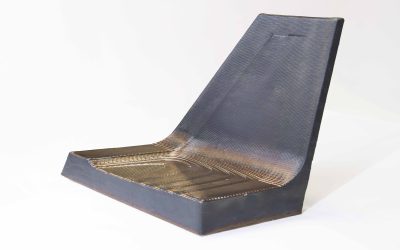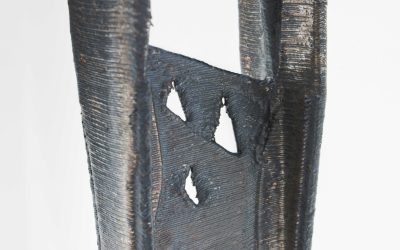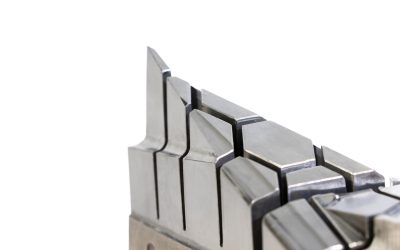CNC machining is a cornerstone of modern manufacturing. From enhancing precision to boosting productivity, CNC machines are revolutionizing how we create complex parts with incredible accuracy. However, there are still some challenges that machine shops face on a daily basis.
Is there a way to overcome them? That’s a big yes. But instead of looking into upgrades of the current CNC machines, we’re gonna talk about how new technologies added to the CNC machine can be a game changer.
Machine Shop: Definition, main activity, functioning, and challenges
Definition
A machine shop is a space mostly dedicated to subtractive manufacturing. CNC machine operators use a variety of tools to shape, cut and transform materials such as metal, plastic or composites, creating parts and components with high precision.
A machine shop can range in size from a small family business (known in the US as a “mom & pop shop” or “job shop”) to a medium or large enterprise.
| Small workshop | Medium workshop | Large workshop |
1 location Between 1 – 5 CNCs | 1 location Between 5 – 30 CNCs | 1 or multiple locations More than 30 CNCs |
Main activity
Machine shops play a crucial role in the manufacture of complex parts. They offer a multitude of services and production often includes cutting, forming, drilling, drilling, finishing and other metalworking-related processes. These processes are essential for producing components to the exact dimensions and tolerances required in industries such as aerospace, automotive and construction.
Parts produced in these workshops can range from prototypes and tooling to final components, which are sold to customers in a variety of industries. Machine tools used include lathes, machining centres, drilling machines, welding equipment and grinding machines, many of which are CNC (computer numerical control) controlled.
In addition, other processes such as heat treatment, electroplating or painting are usually carried out in separate facilities. The machining shop generally has a warehouse for raw materials (bars and billets) and finished products, and the traceability of these will depend on the industries to which they are supplied.
Challenges faced by Machine Shops today
The main challenges faced by machine shops include:
- Long lead times and warehousing of expensive materials before receiving official orders from customers.
- Interruptions in production due to the need to manufacture work holding and internal fixtures.
- Available space, which is compromised by the number of material blocks to be stored in Warehouse.
- Rejection of jobs involving complex parts that could not be manufactured using traditional machine shop methods or materials that are difficult to machine.
- The tendency for companies to prefer a single supplier for prototypes and mass production, which may force machine shops to accept unprofitable work to keep their customers.
- Fear of 3D printing service companies capturing the low-volume parts business.

Implementing metal 3D printing in the Machine Shop
Metal 3D printing offers many significant advantages, such as the ability to create complex shapes and structures, the reduction of material waste and the ability to manufacture customised parts more efficiently compared to traditional methods. However, there are a few reasons why some Machine Shops may be reluctant to implement this technology, such as:
- High initial cost: Metal 3D printing equipment can be expensive to purchase, which can be a barrier to entry for some companies, especially smaller ones or those with tight budgets. The initial investment and running costs are therefore unattractive for the company.
- Safety: When considering other technologies such as PBF, the use of powder requires higher health and safety standards than those to which machine shops are familiarised.
- Training: Operator qualifications are higher than those required for CNC machining. That is, it implies that the worker has some knowledge of computer-aided design (CAD), understanding of 3D printing technology, machine maintenance, etc. This may imply the need to train existing staff or hire specialists, which could increase costs and implementation time.
- The size, geometry and performance of the parts: These do not meet the requirements of most of their parts, which are bulky and heavy for the most part.
- Technological uncertainty: As metal 3D printing technology is still evolving, some companies may be reluctant to invest in it due to uncertainty about how it might change or improve in the future, which could make their current investment obsolete.
Meltio’s main features
Employing Meltio’s additive technology using wire presents an extremely interesting and viable alternative. There are four reasons for this choice:
Similar to Laser Welding
This process is similar to laser welding, a technique widely used in traditional manufacturing, making it easy to adopt and understand.
Versatility of the wire
The wire, used as raw material, is solid and can be integrated both on the side and inside a CNC machine.
Efficient waster material management
Waste material can be handled efficiently, comparable to swarf management in CNC machining, contributing to a cleaner and more sustainable manufacturing process.
Meltio as a complement for Machine Shops
Keep in mind that CNC machines are designed to operate in highly controlled environments to maintain high levels of precision. In the DED (Directed Energy Deposition) process, one of the technologies found is Powder-Bed Fusion, where powder particles are fused together using thermal energy from a laser.
The presence of metal dust in machine shops can contaminate sensitive components and cause premature machine wear or compromise the quality of the parts produced. In addition, these facilities are generally designed to operate with relatively low risks compared to those associated with handling metal powders, and are therefore often not equipped with the necessary safety measures to handle these materials safely if they are to be implemented. Therefore, powder 3D printing is not an option to be considered.
However, in the field of metal 3D printing, Meltio has developed an innovative technology which is Wire-Laser Metal Deposition (LMD-W). This unique technology combines the use of metal wire as a filler material and a high-power laser as an energy source to melt the wire, layer by layer, building metal parts with high precision and quality.
The W-LMD technology produces parts with exceptional microstructure and a density of 99.998%, surpassing the properties of castings and rivaling those of forgings.
So could Machine Shops consider adopting 3D printing technology as an aid? The answer is a resounding yes to implementing 3D printing in a Machine Shops environment and we tell you when it is really necessary and why it would be the best option if it is with Meltio’s technology.
Complex geometries
When industries need parts with complex designs that are difficult or impossible to manufacture with traditional methods alone, 3D printing can be your ally. Additive manufacturing allows the creation of parts with complex internal features, as well as being tailored to the customer’s particular needs. In addition, subtractive methods allow the required surface finish and precision to be achieved.
Material efficiency
For expensive materials, 3D printing can reduce material waste. In addition, if the part is made of a material that is difficult to machine, the tools tend to wear more assiduously and the cost of the machining project will increase. Compared to PBF, the latter technology has a much higher material changeover cost compared to wire.
Repair, maintenance and Feature Addition
It is especially useful for repairing high-value parts. Meltio technology can add material to worn or damaged areas, and subtractive methods can then restore the part to its original specifications. In addition, thanks to Feature Addition, new features can be added to parts that have already been created.
Dual Wire
As well as enabling the recovery of failed CNC machining jobs by repairing them, this solution is made even more efficient with the use of Meltio’s Dual Wire, which allows the application of materials with specific properties in critical areas, using another, cheaper material with different properties on the rest of the part.
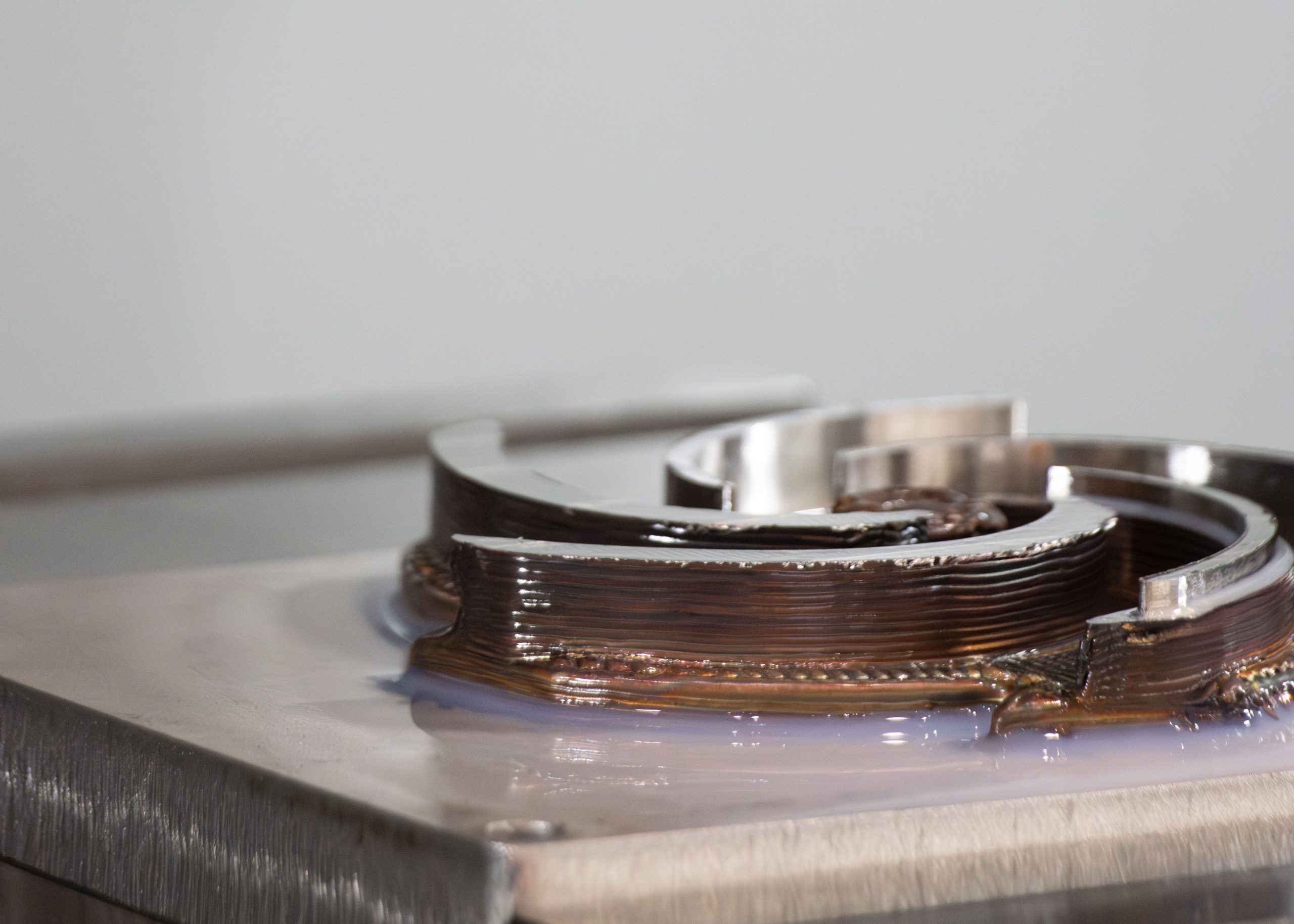
Reducing steps in the manufacturing process
By using Melio in a CNC shop, 3D printing can reduce steps in the manufacturing process. By being able to quickly produce near-net shape parts, which are then used subtractive methods, the entire manufacturing process is accelerated. With this technology, labour-intensive steps like cutting, bending, and welding are avoided. This simplification of multiple manufacturing steps results in increased operational efficiency and reduced labour costs. In addition, this technology allows a higher volume of work (depending on the size of the part to be printed) without compromising the precision and quality of the parts produced, and also avoids human error.
Improved performance
Meltio can improve the performance of parts. For example, internal cooling channels can be created with precision to improve their functionality. There is a type of cooling channels (spiral channels) that cannot be made with traditional methods, but with Meltio it is possible.
Economic feasibility
There are cases where the volume is low and the part is complex. This requires fixturing (special tools) that in the end, the business case itself becomes unattractive. However, Meltio is capable of making these tools through 3D printing, making the project more viable.
From prototype to production
3D printing can be beneficial in the transition from prototype to production. It allows for more efficient prototyping, as well as making simple adjustments during the design phase (without the need to reprogram projects on the CNC) and examining if necessary and feasible. Once the design is complete, the same equipment can be used for production.
TIP: Discover the Meltio Engine CNC Integration, the most affordable hybrid manufacturing solution, fitting almost any CNC machine on the market.
Meltio M600 for Machine Shops
Meltio’s 3D printer, the Meltio M600, is an integral complement to the work carried out in CNC machining workshops. What does Meltio specifically offer in comparison to other technologies as a solution with this machine in a machine shop?
Zero Point Clamping
Among these features, it is important to highlight the Zero Point Clamping system, which allows clamping plates to be attached accurately and quickly to the M600’s printing table for production. It also facilitates the process by allowing the part to be transferred directly from the M600 to the CNC without the need to re-reference its position. In this way, the system automatically recognizes the precise location where machining is to be carried out, ensuring optimum control throughout the process and faster flow.
Blue laser
The blue laser, with a wavelength of 980 to 450 nm, allows materials, previously unprintable due to their absorptivity, to become printable, resulting in faster deposition with lower laser power and lower energy consumption per part. This is most notable with reflective materials such as aluminium and copper alloys, which are in high demand and difficult to process with conventional NIR lasers. With this blue laser deposition head, the 3D printer is designed for industrial-scale manufacturing and is optimized for machine shops and other 24/7 production environments.
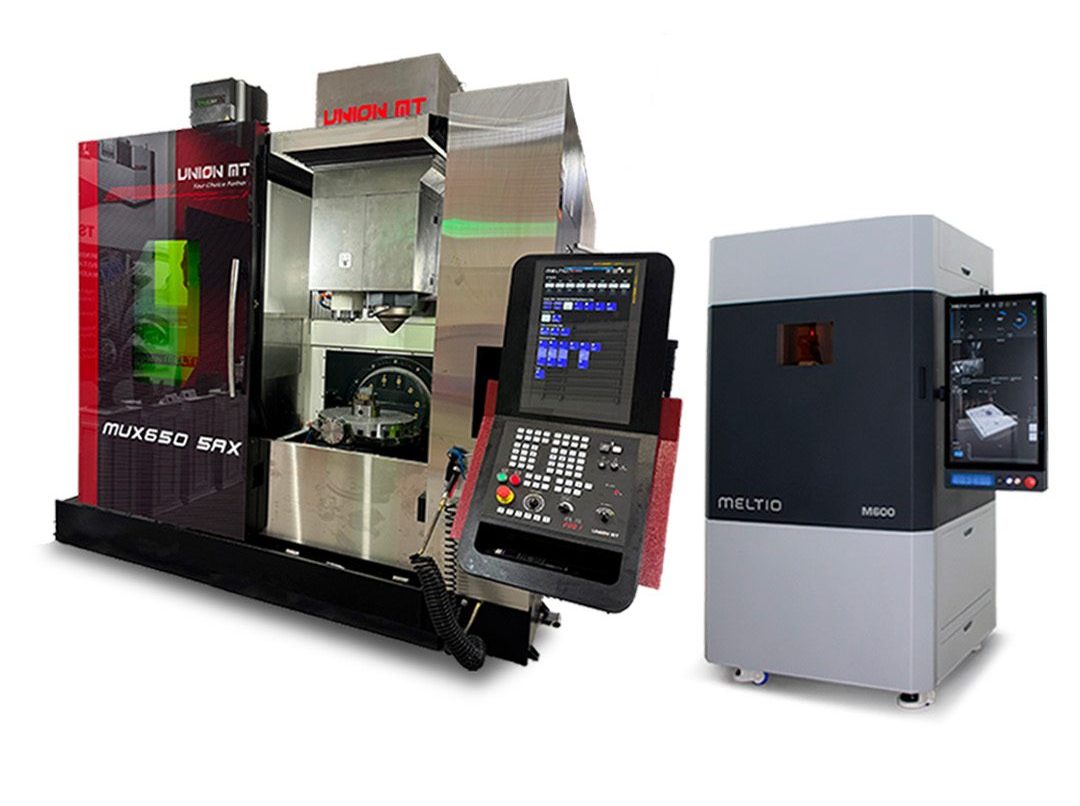
Near net shape
The production of the near net shape for subsequent machining of critical areas (just like casting).
Multiwire
This option allows for sequential 3D printing of up to 4 materials (adding 2 new ones: Aluminium and Copper) with very fast automatic wire switches.
Part repeatability
The new head design eliminates the need for calibration, avoiding human error and ensuring repeatability of parts, an essential feature in industrial environments.
Free up CNC machine capacity at the end of the day
Optimizing CNC machine utilization at the end of the day frees up additional capacity, as these are used optimally by adding value only in the final finishing of critical surfaces, rather than roughing blocks to near-final shapes.
By increasing operational efficiency, time and resources are available to do more work, allowing more parts to be run or production volume to be increased on the same CNC machine. This improved productivity results in increased revenue, as throughput is maximized without the need to invest in additional equipment or extra resources, thereby recouping the investment much sooner.
TIP: Know more about the Meltio M600 by downloading the Meltio M600 brochure.
Benefits of integrating Meltio’s technology into the Machine Shop
So, how’s Meltio technology going to help your Machine Shop? There are several advantages, but these are the main benefits:
Lead times and stockage
To manufacture a part with CNC machines, a complete block of material of the right size is required, which can cause production delays if it is not available. By contrast, using spools, it is possible to transform any coil into the desired part immediately, regardless of the dimensions, and there is no need to wait. This gives us greater versatility and efficiency in the manufacturing process.
Tool and material savings
Spending less time on machining prolongs tool life, especially when working with hard materials such as Inconel, titanium and tool steels. In addition, material consumption is reduced by machining from near-net shapes instead of blocks. Since the welding wire can be adapted to any shape, the need to maintain costly stocks of different sizes is eliminated.
New additive business line
One area of concern for machine shops is the transition from subtractive manufacturing to the addition of a new business line based on additive manufacturing. This transition represents a very good opportunity to expand their services and take advantage of the benefits of 3D printing technology in the creation of high-precision parts and components.
Yes to new projects not possible before
There are 2 conditions for saying no to a project: the first one would be complex geometries not possible to manufacture, and the second would be because the manufactured parts are made of materials that are difficult to machine. This implies wear and tear on the tools and the materials used tend to be quite expensive. With just-in-time manufacturing 3D printing makes it possible to produce parts on demand.
Conclusion
Meltio provides a solution to three challenges machining businesses today routinely confront, which are:
- The need to interrupt production on machine tools to make custom workholding using those same machines.
- Long lead times for parts made of high-value metals, often resulting from a wait for castings or forgings in those materials.
- Work that must be turned down, because the job involves a challenging material or geometry the shop is not confident it can economically machine.
Meltio offers numerous benefits to machine shops. In general, it allows significant material savings, reduces tool wear, adds value to CNC machines on the shop floor, facilitates the repair of existing parts and enables features to be added to already manufactured parts.
In terms of using the Meltio M600, it frees up CNC machine capacity at the end of the day, allowing more parts or volume to be processed per machine, thereby increasing revenue. The increased capacity of the CNC equipment provides the ability to get more work done in a given period of time.
The relevance of the Meltio M600 transcends multiple industries thanks to its adaptability, print quality and reduced material waste, proposing a viable solution for modern manufacturing seeking flexibility, efficiency and sustainability.

